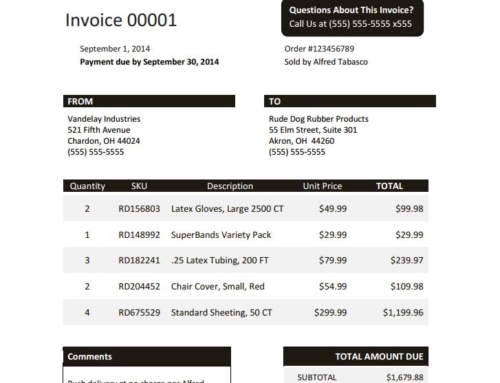There are many steps that go into finalizing the sale of a product or service; there is pricing, then quote creation, negotiation, approvals, and contract and order management. Once all of the work is done to complete each of those steps, the sale is complete… at least as far as your sales team is concerned. But what about the rest of the process? What about the part where you actually get paid?Once the order is made, an invoice must be sent and payment must be collected; otherwise it’s like the sale never actually happened. This is where the invoice to cash process comes in, some of the most important steps in the entire sales process. Below are a few tips to help you work through the final steps to quickly complete the invoice to cash process.
-
- Trouble with invoicing is one of the top reasons companies struggle to quickly collect invoices and close the cycle. Many end up sending incomplete or incorrect invoices and/or take far too long to actually create and send the invoice to their customers. The result of such clumsy invoicing practices create barriers to payment and give customer little time to process payment within the agreed upon terms. In fact, a recent industry study found that 46% of invoices are paid late because of these administrative errors- not because of a customer’s inability to pay.
- Many companies have a hard time keeping up with accounts receivable communications, one of the biggest factors in quickly closing the invoice to cash cycle. Best practices in accounts receivable management say you should always follow up with customers to ensure they have received the invoice and understand what is expected of them, send reminder letters as invoices approach their due date, and continue to notify customers of outstanding balances as the invoice becomes past due. Sticking to strict communications schedules helps forgetful customers and provides customers with multiple opportunities to bring up and questions or concerns that might be delaying their payment. These communications can be time consuming, especially if you do not have a large A/R staff; but these communications have been a proven way to speed up the invoice to cash cycle and increase cash flow.
- Your company uses marketing tools to track the progress, success, and failure of marketing campaigns; and sales uses CRM to track leads, prospects, and opportunities. What about your accounts receivable team? Once the invoice goes out to the customer, they have no way to track the progress of the invoice or the steps being taken to collect it; they’re in the dark. All of that information is usually hiding in someone’s email account which does nothing for the teams as whole. By using accounts receivable management software to track and manage your invoices, anyone with access to the system will know exactly what is going on with an invoice and what steps need to be taken to collect it. Additionally, the program will allow you to track the success and failure of your internal processes so you can tweak them for optimal results.
The invoice to cash cycle is possible the most important part of the sales process. You can sell as much product or services as you like, but without proper invoicing you are unable to actually collect any cash. Collecting on invoices is the only way you can improve and grow your business, so following these tips for improvement on the invoice to cash process are key.




